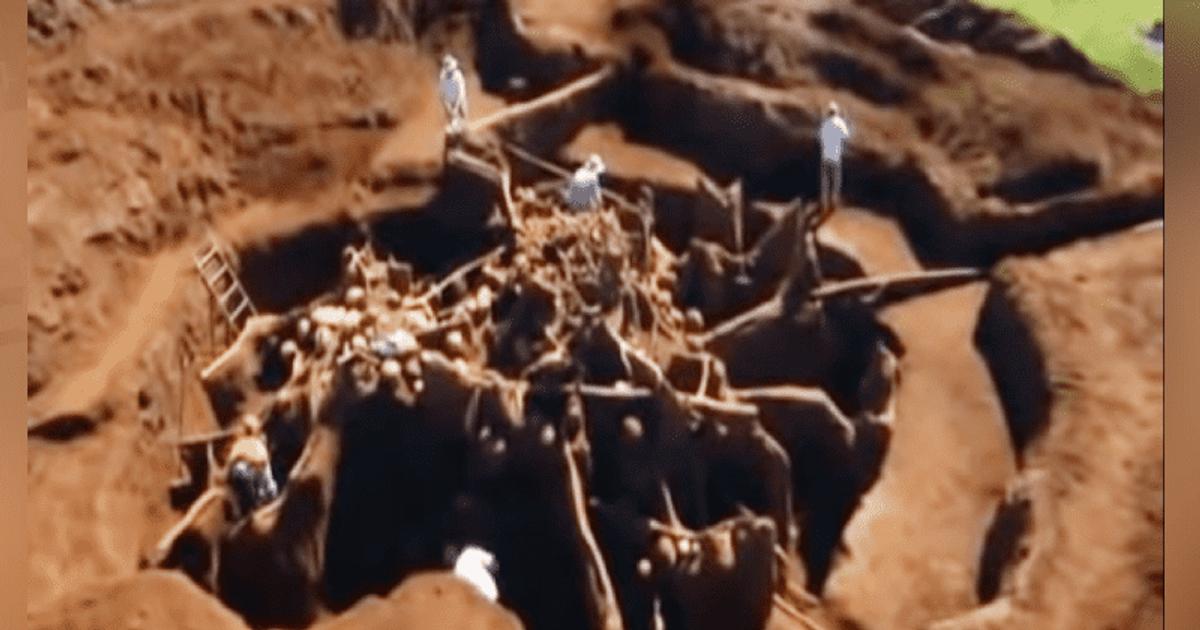
Editor’s note: This article was originally published on November 4, 2022. It has since been updated.
In 2012, scientists discovered a remarkable underground ant city that had once been home to millions of insects, as shown in the documentary “Ants: Nature’s Secret Power.” This intricate network of roadways, pathways, and gardens was unearthed in Brazil, where one of the largest ant colonies in the world is believed to have existed, according to the Daily Mail. The vast tunnel system previously housed leafcutter ants, renowned for forming one of the most complex communities on Earth, second only to humans. An ant queen starts her colony by collecting 300 million sperm from males. The offspring then begin constructing and gathering vegetation, with their roles in the society determined by their size. The colony, often referred to as a “superorganism” due to its remarkable self-organization, took on the monumental task of building this extensive structure. However, the exact time and cause of the colony’s disappearance remain unknown.
Experts poured about 10 tonnes of concrete into surface holes that the ants used as air conditioning ducts to reveal the tunnels. The material was poured into the maze-like tubes over ten days, covering an area of 500 square feet and reaching 26 feet below the surface. After a month, scientists led by Professor Luis Forgi began excavating and uncovered the astonishing metropolis, dubbed the “ant equivalent of the Great Wall of China.”
According to the “Nature’s Secret Power” documentary, the ants excavated about 40 tonnes of earth to build their labyrinth. Each ant regularly carried loads of earth several times its own weight, over distances equivalent to just over half a mile for a human. This resulted in a highly efficient megalopolis with an optimized network for transportation and ventilation. Main highways connected the primary chambers, while secondary roads branched off to numerous garbage dumps and fungal gardens cultivated from vegetation gathered by worker ants.
The plant matter cultivates fungus, which feeds on leaves and nourishes the ant larvae. Other ants, typically the older or more expendable members of the colony, handle waste management. They store garbage in dumps before moving it outside the city, ensuring the removal of harmful parasites like the phorid fly.
By placing its eggs in the cracks of the worker ants’ heads, this insect plants the seeds of its doom. Majors are larger ants that act as an organized army and are utilized to fend off such threats. Similar to the armed forces in human nations, they occasionally assist with engineering undertakings like tunnel digging.
Joe Parker, assistant professor of biology and biological engineering, whose research focuses on ants and their ecological relationships with other species, told Science Direct, “It’s been a mystery in both engineering and in ant ecology how ants build these structures that persist for decades. It turns out that by removing grains in this pattern that we observed, the ants benefit from these circumferential force chains as they dig down.”
When asked if ants are aware of what they’re doing when they dig and build these complex structures, Parker calls it a behavioral algorithm. “That algorithm does not exist within a single ant,” Parker says. “It’s this emergent colony behavior of all these workers acting like a superorganism. How that behavioral program is spread across the tiny brains of all these ants is a wonder of the natural world we have no explanation for.”
